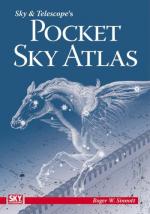|
This section contains 869 words (approx. 3 pages at 300 words per page) |

|
The principle of the telescope was first developed by a Dutch spectacle-maker, Hans Lippershey (1570-1619). He used his first telescope, made in 1608, for observing grounded objects from a distance, rather than astronomy. His invention was not openly embraced by the scientific community; he was, in fact, unable to patent it.
In 1609, not far away, Italian mathematics professor Galileo developed his own refractor telescope, without seeing even a model of Lippershey's work. His creation had an object glass that bent light rays to a focus near the eye. There a second lens, an eyepiece, magnified the image. His invention grew to be quite popular, as glass was relatively cheap and mirrors of the day were of very poor quality. Galileo's first telescope was small by today's standards and it's object glass was only one inch in diameter.
This simple instrument allowed Galileo to make astonishing discoveries. He saw that...
|
This section contains 869 words (approx. 3 pages at 300 words per page) |

|


